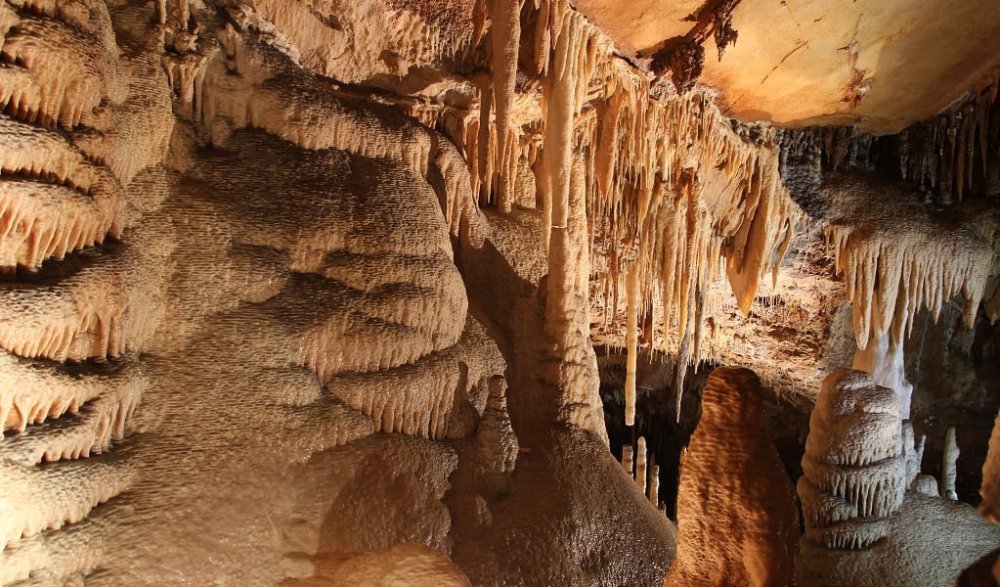Caving is no doubt an exhilarating experience that draws us nearer to the secrets kept beneath the surface of the earth. It can be quite thrilling to explore large underground chambers and dark, winding tunnels. Even though caving can be exhilarating, it requires careful planning and energy conservation. Without it, even the most thrilling travel experience runs the risk of becoming hazardous. Continue reading on conserving energy during caving.
A lot of cavers, particularly novices, frequently run out of energy midway through their expedition. They underestimate their energy requirements, which can result in exhaustion, dehydration, or even a total absence of light. The difficulties are genuine, and there may be dire repercussions. But don’t worry, with the right information and planning, these issues are easily preventable.
In the sections below, we’ll explore practical ways to conserve energy during your caving trips. By following these tips, you can ensure that your adventure is not only exciting but also safe and enjoyable.
Understanding the Importance of Energy Conservation
Why Conserve Energy?
Your body has to work very hard when caving to get around narrow passageways, climb over rocks, and maintain your balance in slick conditions. These activities all quickly deplete your energy. In an unfamiliar and difficult environment, it can be dangerous to find yourself too exhausted to finish your journey if you don’t manage your energy wisely.
The Physical Demands of Caving
Strength, endurance, and mental focus are necessary for caving. It is made even more physically demanding by the rough, frequently wet, and chilly terrain. The constant need to balance, climb, or crouch makes every step in the cave deliberate and demanding, and it can wear you out faster than you might think.
The weight of your equipment, including lights, helmets, food, water, and safety gear, is also a factor, which makes energy conservation even more important. Being stuck in a cave and too fatigued to find your way out is the last thing you want to happen.

Common Mistakes that Drain Energy
Underestimating the level of difficulty of the cave is one of the most frequent mistakes made by cavers. Although they might believe it’s just a straightforward stroll or climb, caves can be unpredictable. An additional error is lugging around too much extra equipment. Being overly prepared is important, but it can make you feel heavy and deplete your energy more quickly.
Wearying yourself by rushing through the cave without stopping can also happen. You might be tempted to push through without stopping due to the excitement of discovery, but this will wear you out quickly.
Practical Tips for Conserving Energy During Caving
1. Plan Your Route Carefully
Make sure to carefully plan your path before entering any caves. Understand the layout of the cave, the distance you’ll need to travel, and any potential obstacles. You can pace yourself and prevent energy-draining unnecessary detours by following a well-planned route.
Step-by-Step Planning Guide:
- Research the Cave: Know its length, difficulty level, and any potential hazards.
- Estimate Time: Calculate how long it will take to explore the cave, including time for breaks.
- Map Out Rest Points: Identify safe spots in the cave where you can rest and recharge.
- Prepare for the Worst: Always have an exit strategy in case of emergencies.
2. Pack Light but Smart
Carrying too much gear can weigh you down, but forgetting essentials can be dangerous. The key is to pack smartly.
Essentials to Carry:
- Lightweight Food: Choose energy-rich snacks like nuts, dried fruits, or energy bars.
- Hydration: A small, easy-to-carry water bottle is crucial. Consider hydration packs that are lightweight and easy to drink from.
- Efficient Lighting: Bring a headlamp with extra batteries, but avoid heavy, bulky lights.
- Emergency Supplies: A small first aid kit, a whistle, and a map of the cave are must-haves.
3. Move Slowly and Steadily
Pacing oneself is one of the best ways to save energy. Breathe steadily, move slowly, and refrain from making abrupt or fast movements. Rushing can result in slips or falls, which can be dangerous and exhausting because uneven ground is common in caves.
4. Stay Hydrated and Nourished
Hunger and dehydration are rapid energy drainers. To maintain your energy levels, eat small snacks and drink lots of water. Steer clear of large meals that could make you feel lethargic.
5. Rest When Needed
Never hesitate to take pauses. Choose a dry, safe place to sit, then unwind for a short while. This will assist you in refocusing and recharging, which will make the remainder of your trip safer and easier.
6. Use Energy-Efficient Techniques
There are some methods you can use to save energy. For example, swimming in water-filled caves with the “frog kick” swimming technique can save a lot of energy in comparison to traditional kicking. Use your legs more than your arms when climbing because they are stronger and can withstand greater strain without wearing out as quickly.

Energy Conservation and Safety
Safety First
Staying safe is just as important as making the trip easier when it comes to energy conservation. Fatigue can result in sluggish decision-making, delayed reaction times, and a higher chance of mishaps. You can stay vigilant and prepared for any eventuality by conserving energy.
Conserving Energy in Different Cave Environments
Various cave environments call for various approaches to energy conservation. For instance, you might need to conserve body heat in a chilly cave, which entails dressing appropriately and taking breaks to prevent becoming overly cold. Remaining dry in a wet cave will help you avoid being fatigued from the extra energy your body expels to stay warm.
Conserving Energy During Nighttime Caving
Caves at night present an additional level of difficulty. Your body’s natural rhythm is set to rest during the night because it is darker. Move slowly and deliberately to save energy, and use your light sparingly to prevent battery drain. Always have a backup light source or extra batteries with you.
One Last Helpful Tip
What to do if your light goes out in a cave?
If your light goes out in a cave, stay calm. First, try to switch to a backup light or use extra batteries if you have them. If you don’t have a backup light, stay where you are and avoid moving in the dark, as it’s easy to get lost or injured. Use a whistle or call for help if you’re with others. If you’re alone, conserve your energy and wait for rescue. Always carry at least two light sources and extra batteries to avoid this situation.
Conclusion
Caving is a thrilling adventure, but conserving energy during caving is crucial for a safe and enjoyable experience. By planning your route, packing smart, moving slowly, and staying hydrated, you can keep your energy levels up and make the most of your time underground. Remember, safety and energy conservation go hand in hand, so be mindful of your energy use, and you’ll have a memorable and safe caving experience.
